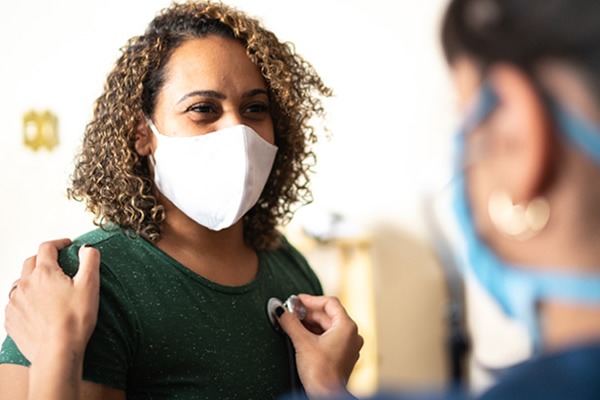
Preventative health has emerged as a cornerstone of modern healthcare, shifting the focus from treating diseases to preventing them. This proactive approach encompasses a variety of strategies, including lifestyle modifications, vaccinations, regular screenings, and education, all aimed at maintaining health and preventing illness. The benefits of preventative health are manifold, impacting not only individual well-being but also the overall healthcare system and society at large. This article delves into the multifaceted advantages of preventative health, exploring its role in enhancing quality of life, reducing healthcare costs, and promoting a healthier, more productive population.
Understanding Preventative Health
Preventative health, also known as preventive medicine, involves measures taken to prevent diseases or injuries rather than curing them or treating their symptoms. It can be categorized into three main types:
- Primary Prevention: These are measures aimed at preventing the onset of illness before it occurs. This includes vaccinations, health education, lifestyle changes like a balanced diet and regular exercise, and environmental measures such as clean air and water.
- Secondary Prevention: This involves the early detection of diseases, often before symptoms occur, to halt or slow its progress. Regular screenings for cancers, blood pressure monitoring, and cholesterol tests fall under this category.
- Tertiary Prevention: These measures are taken after a disease has been diagnosed to prevent further deterioration and complications. This includes rehabilitation programs, chronic disease management, and therapy for recovery.
The Benefits of Preventative Health

1. Improved Quality of Life
One of the most significant benefits of preventative health is the enhancement of quality of life. By adopting healthy behaviors and undergoing regular health screenings, individuals can detect potential health issues early and take necessary actions to address them. For example, early detection of cancers such as breast or prostate cancer significantly increases the chances of successful treatment and survival, thereby improving the patient’s quality of life.
Furthermore, lifestyle modifications like regular exercise, a balanced diet, and avoiding harmful habits such as smoking and excessive alcohol consumption contribute to overall well-being. These changes can prevent chronic conditions like diabetes, hypertension, and cardiovascular diseases, leading to a healthier and more fulfilling life.
2. Reduced Healthcare Costs
Preventative health measures can lead to substantial cost savings for both individuals and the healthcare system. Treating diseases and managing chronic conditions are often far more expensive than preventing them. For instance, the cost of managing diabetes and its complications is significantly higher than the cost of interventions aimed at preventing diabetes, such as dietary counseling and physical activity programs.
Vaccinations are another excellent example of cost-effective preventative health measures. Immunizing children and adults against diseases such as measles, influenza, and human papillomavirus (HPV) can prevent outbreaks and reduce the need for expensive treatments and hospitalizations.
3. Increased Longevity
Preventative health measures are closely linked to increased life expectancy. By focusing on preventing diseases rather than just treating them, individuals can enjoy longer, healthier lives. Regular health check-ups and screenings can detect conditions like hypertension and high cholesterol early, allowing for timely intervention and reducing the risk of life-threatening events like heart attacks and strokes.
Additionally, public health initiatives that promote healthy behaviors, such as anti-smoking campaigns and obesity prevention programs, contribute to a decrease in mortality rates and an increase in average lifespan.
4. Enhanced Productivity
A healthy population is a productive population. Preventative health measures can reduce the incidence of illness-related absenteeism in the workplace, leading to increased productivity and economic benefits. When individuals maintain good health, they are less likely to take sick days and more likely to contribute effectively to their work and communities.
For example, flu vaccinations can significantly reduce the number of workdays lost to illness during flu season. Similarly, managing chronic conditions like asthma and diabetes through preventative measures can help individuals maintain their work performance and reduce the economic burden associated with these diseases.
5. Reduced Burden on Healthcare Systems
Preventative health can alleviate the pressure on healthcare systems by reducing the number of patients requiring intensive medical care. Hospitals and clinics can become overwhelmed with patients needing treatment for preventable conditions, leading to longer wait times and strained resources. By prioritizing prevention, healthcare systems can allocate resources more efficiently and improve the quality of care for those who truly need it.
For instance, widespread vaccination programs can prevent disease outbreaks, reducing the need for emergency response and hospital admissions. Early detection and management of chronic diseases can also decrease the demand for specialized care and long-term hospital stays.
6. Empowerment Through Education
Education is a crucial component of preventative health, empowering individuals with the knowledge and skills needed to make informed health decisions. Public health campaigns, school health programs, and community workshops can educate people about the importance of a healthy lifestyle, proper nutrition, regular exercise, and avoiding risky behaviors.
When individuals understand the impact of their choices on their health, they are more likely to adopt preventative measures and seek regular medical advice. This proactive approach can lead to a healthier population that takes responsibility for its well-being.
7. Prevention of Infectious Diseases
One of the most evident benefits of preventative health is the control and prevention of infectious diseases. Vaccination programs have successfully eradicated or significantly reduced the incidence of deadly diseases such as smallpox, polio, and measles. Preventative health measures such as hand hygiene, safe food handling, and infection control practices in healthcare settings also play a critical role in preventing the spread of infectious diseases.
During the COVID-19 pandemic, the importance of preventative health measures became even more apparent. Public health strategies such as social distancing, mask-wearing, and vaccination were crucial in controlling the spread of the virus and mitigating its impact on society.
Preventative Health in Action

1. Vaccination Programs
Vaccination is one of the most effective and cost-efficient preventative health measures available. Vaccines prevent millions of deaths each year and protect individuals and communities from infectious diseases. Programs like the Childhood Immunization Schedule ensure that children receive vaccines at the appropriate times to protect them from potentially life-threatening diseases.
The benefits of preventative health through vaccination extend beyond individual protection. Herd immunity occurs when a significant portion of a population becomes immune to a disease, reducing its spread and protecting those who cannot be vaccinated, such as infants and immunocompromised individuals.
2. Cancer Screenings
Regular cancer screenings are vital for early detection and treatment. Mammograms, Pap smears, colonoscopies, and prostate-specific antigen (PSA) tests are examples of screenings that can identify cancer at an early, more treatable stage. Early detection through screening can lead to better outcomes, reduced treatment costs, and improved survival rates.
Public health initiatives often provide free or low-cost screenings to underserved populations, ensuring that everyone has access to these life-saving measures. By promoting and facilitating regular cancer screenings, healthcare providers can significantly reduce the burden of cancer on individuals and society.
3. Chronic Disease Management
Chronic diseases such as diabetes, hypertension, and heart disease are major contributors to morbidity and mortality worldwide. Preventative health strategies play a crucial role in managing these conditions and preventing their complications.
Lifestyle modifications, including a healthy diet, regular physical activity, and weight management, are fundamental to preventing and managing chronic diseases. Additionally, regular monitoring and medication adherence are essential for controlling conditions like hypertension and diabetes. Preventative health programs that support individuals in making these changes can lead to better health outcomes and reduced healthcare costs.
4. Mental Health Promotion
Preventative health is not limited to physical health; it also encompasses mental health. Promoting mental well-being through preventative measures can reduce the incidence of mental health disorders and improve overall quality of life. Programs that focus on stress management, resilience building, and early intervention for mental health issues can prevent more severe problems down the line.
Workplace wellness programs, school-based mental health initiatives, and community support groups are examples of preventative measures that can promote mental health. By addressing mental health proactively, individuals and communities can enjoy better mental and emotional well-being.
5. Lifestyle and Behavioral Interventions
Lifestyle and behavioral interventions are key components of preventative health. Encouraging healthy habits such as regular exercise, balanced nutrition, smoking cessation, and moderate alcohol consumption can prevent a wide range of diseases and improve overall health.
Healthcare providers play a crucial role in supporting patients to make these changes. Counseling, support groups, and educational resources can help individuals adopt and maintain healthier lifestyles. Community programs that promote physical activity, provide access to healthy foods, and offer smoking cessation support are also essential in promoting preventative health.
Challenges and Barriers to Preventative Health
Despite the numerous benefits of preventative health, several challenges and barriers can hinder its implementation and effectiveness. Addressing these challenges is crucial for maximizing the impact of preventative health measures.
1. Accessibility and Equity
Access to preventative health services is not always equitable. Individuals in low-income communities, rural areas, and underserved populations often face barriers to accessing these services. These barriers can include financial constraints, lack of transportation, and limited availability of healthcare providers.
To overcome these challenges, policymakers and healthcare organizations must prioritize equitable access to preventative health services. This can involve expanding community health programs, offering free or low-cost screenings and vaccinations, and utilizing telemedicine to reach remote populations.
2. Awareness and Education
Lack of awareness and education about the importance of preventative health can prevent individuals from taking proactive steps to protect their health. Misinformation and cultural beliefs can also influence health behaviors and attitudes toward preventative measures.
Public health campaigns and educational initiatives are essential for raising awareness and promoting the benefits of preventative health. Schools, workplaces, and community organizations can play a vital role in disseminating accurate information and encouraging healthy behaviors.
3. Behavioral Change
Encouraging individuals to adopt and maintain healthy behaviors can be challenging. Habits such as smoking, poor diet, and physical inactivity are often deeply ingrained and difficult to change. Additionally, individuals may lack the motivation or support needed to make lasting changes.
Healthcare providers can support behavioral change by offering personalized advice, counseling, and resources. Community programs and support groups can also provide the necessary encouragement and assistance to help individuals make healthier choices.
4. Policy and Funding
Adequate funding and supportive policies are critical for the success of preventative health initiatives. However, preventative health often competes with other healthcare priorities for limited resources. Policymakers must recognize the long-term benefits of preventative health and allocate sufficient funding to support these programs.
Implementing policies that promote healthy environments, such as smoke-free laws, nutrition labeling, and access to recreational facilities, can also facilitate preventative health efforts. Collaboration between government, healthcare organizations, and communities is essential for creating a supportive environment for preventative health.
Conclusion
The benefits of preventative health are vast and far-reaching, offering significant advantages for individuals, healthcare systems, and society as a whole. By focusing on disease prevention and health promotion, we can improve quality of life, reduce healthcare costs, increase longevity, enhance productivity, and reduce the burden on healthcare systems.
Preventative health encompasses a wide range of strategies, from vaccinations and screenings to lifestyle modifications and education. Technological advancements have further enhanced the effectiveness and accessibility of preventative health measures, providing new tools for monitoring and promoting health.
Despite the challenges and barriers, the potential impact of preventative health is undeniable. By prioritizing prevention and investing in preventative health initiatives, we can create a healthier, more resilient population and a more sustainable healthcare system. The benefits of preventative health extend beyond individual well-being, contributing to a thriving society where everyone has the opportunity to live a healthy, fulfilling life.






